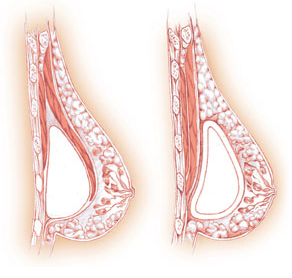Breast augmentation also known augmentation mammoplasty is a type of type of surgery done to increase breast size with the use of breast implants. Breast augmentation is done to aesthetically augment the size, form, and feel of the breasts.
According to Wikipedia, the reasons for breast augmentation may be genuine, but most breast enhancement patients are usually young women whose personality profiles indicate psychological distress about their personal appearance and their bodily self image, and a history of having endured criticism (teasing) about the aesthestics of their person.
There are three general types of breast implants, defined by their filler material: saline solution, silicone gel , and composite filler. The composite implants are typically not recommended for use anymore and has been banned in Europe and America due to its associated health risks and complications.
Before you decide to have a breast enlargement surgery, it is important your know the following about breast implants:
Breast implants won’t prevent your breasts from sagging
to correct sagging breasts, you might need a breast lift in addition to breast augmentation.
Breast implants aren’t guaranteed to last a lifetime
The average life span of an implant is 10 years. Implant rupture is a possibility. Also, your breasts will continues to age, and factors such as weight gain or weight loss might change the way your breasts look. The issues will likely lead to more surgery.

Implants surgery Placement Credit: Wikimedia
Mammograms might be more complicated
The presence of radiologically opaque breast implants might interfere with the radiographic sensitivity of the mammogragh, that is , the image might not show any tumour(s) present (even though there is). Breast implants therefore gives false negative mammograms.
Breast implants might affect breastfeeding
The presence of implants currently presents no contraindication to breast feeding, and no evidence to support that the practice may present health issues to a breast feeding infant. However, women with implants may have functional breast-feeding difficulties; mammoplasty procedures that feature periareolar incisions are especially likely to cause breast feeding difficulties. Surgery may also damage the lactiferous ducts and the nerves in the nipple-areola area.
READ ALSO: COST OF COSMETIC SURGERIES
Breast implants can cause a rare form of cancer
The FDA has identified that implants may be associated with a rare form of cancer called anaplastic large -cell lymphoma, believed to be associated with chronic bacterial inflammation.
Insurance does not cover breast implants
Unless it is medically necessary-such as after a mastectomy- breast enhancements surgeries are not covered by insurance. Be prepared to pay-out-of-pocket or future imaging tests.
After the removal of implants, you might need another surgery
If you decide to have you implants removed, you might need a breast lift or other reconstructive surgery to help restore your breasts’s appearance.
You might need an MRI scan
The FDA recommends routine monitoring with MRI after three years. However, recent studies show that there is little data to support routine screening unless you have symptoms.
Breast augmentation can be done as an outpatient procedure. You will most likely go home the same day. The procedure rarely requires a hospital admission. Insertion of implants is done under local or general anasthesia.
SOURCES:





















